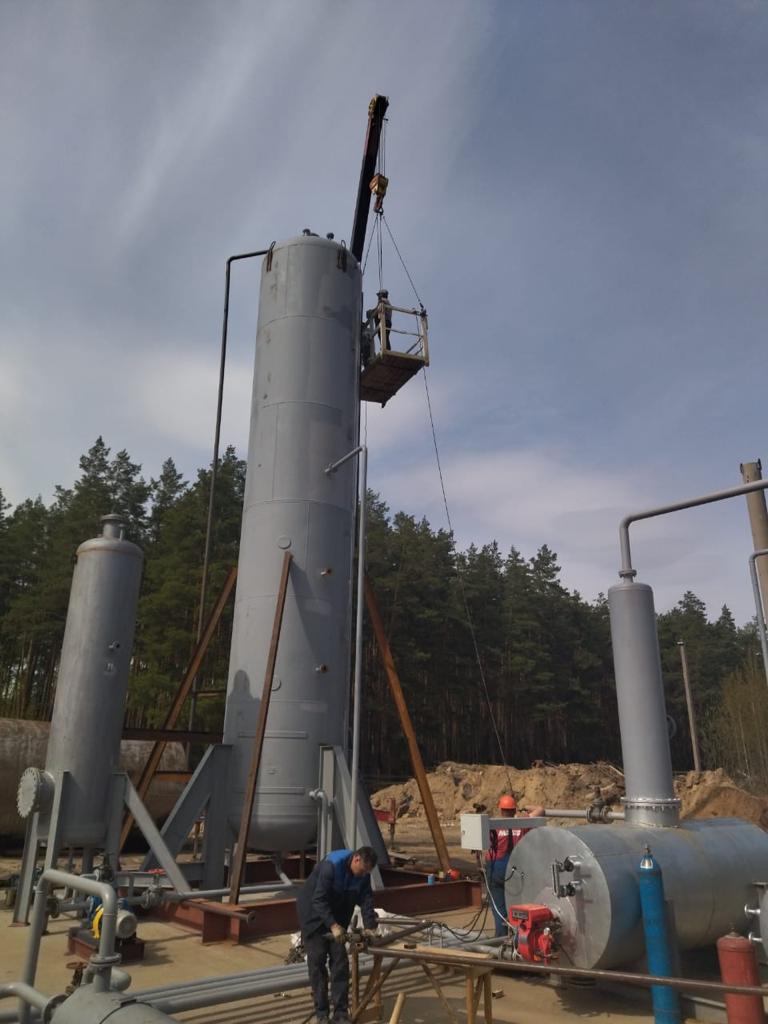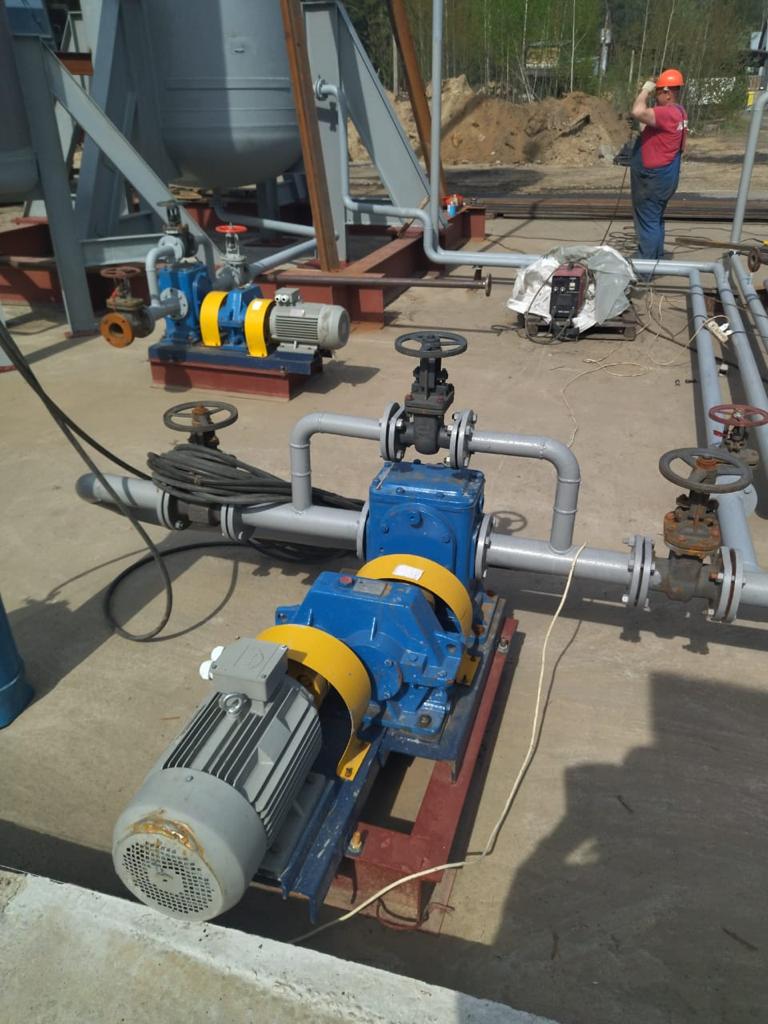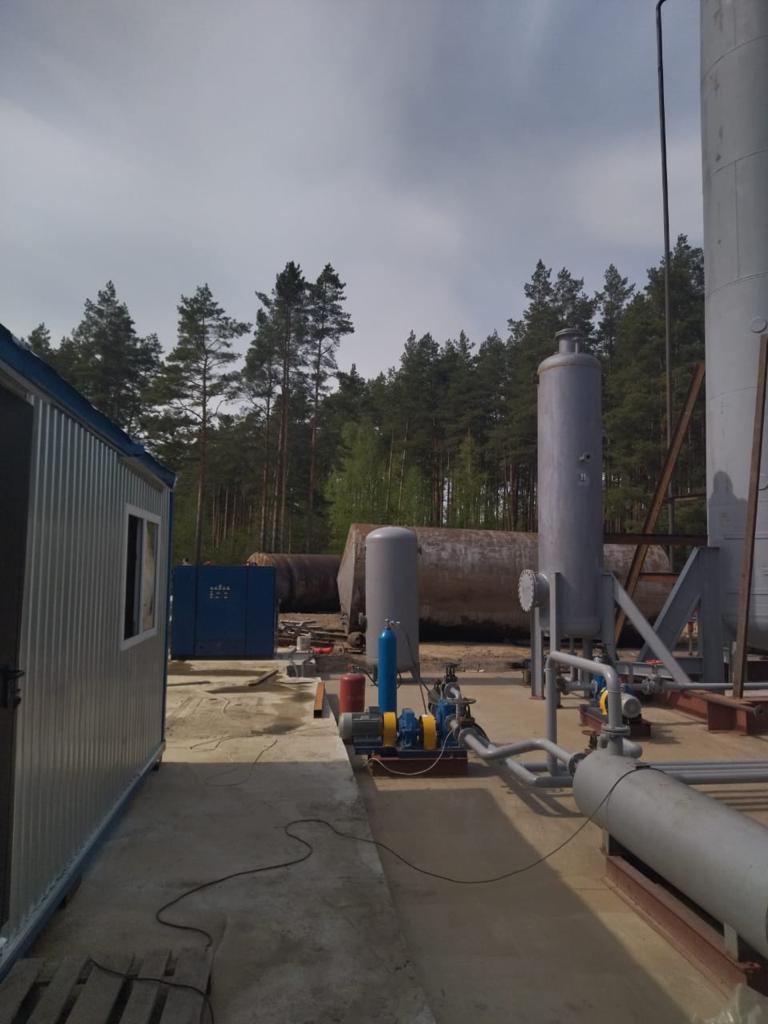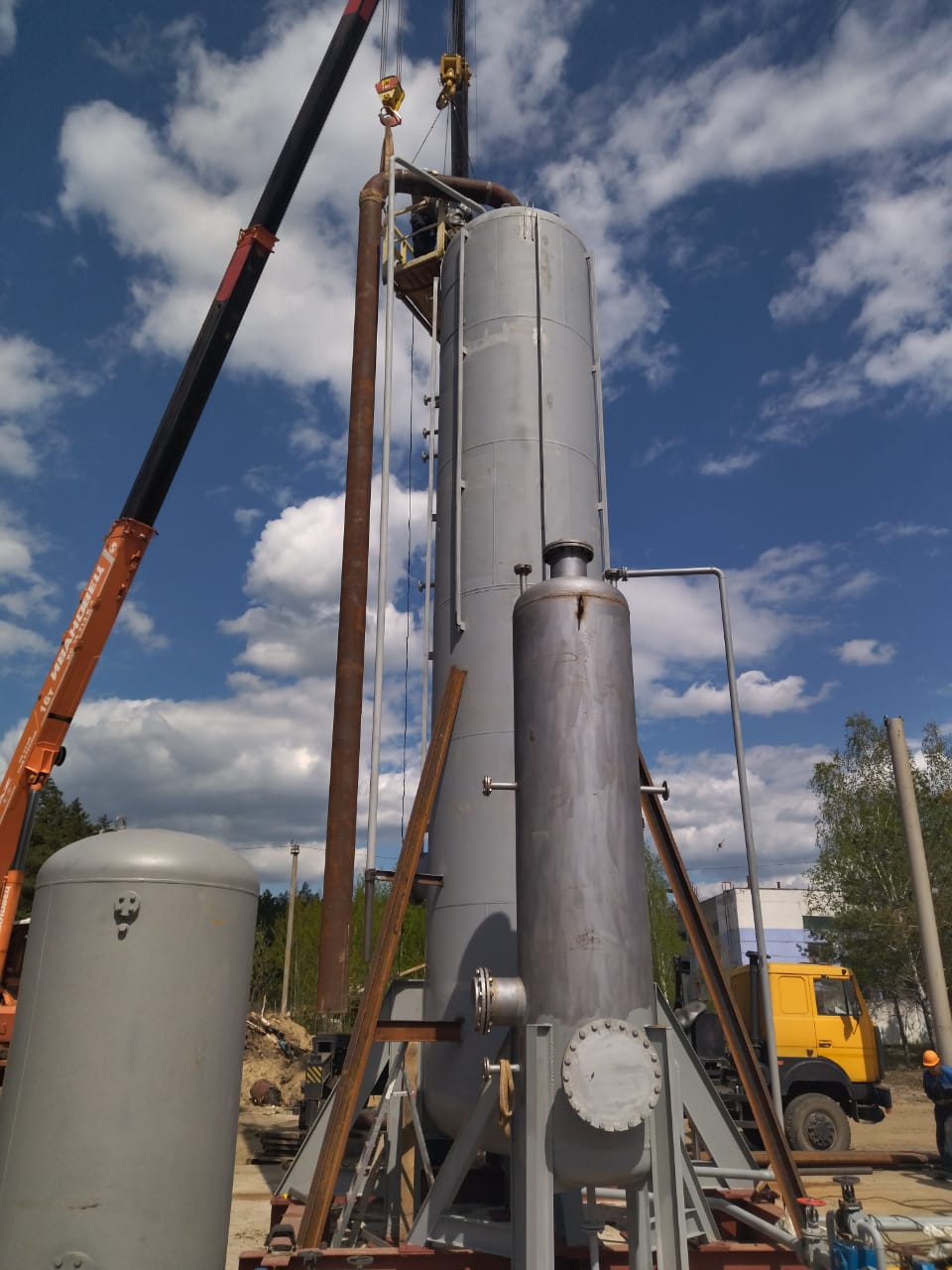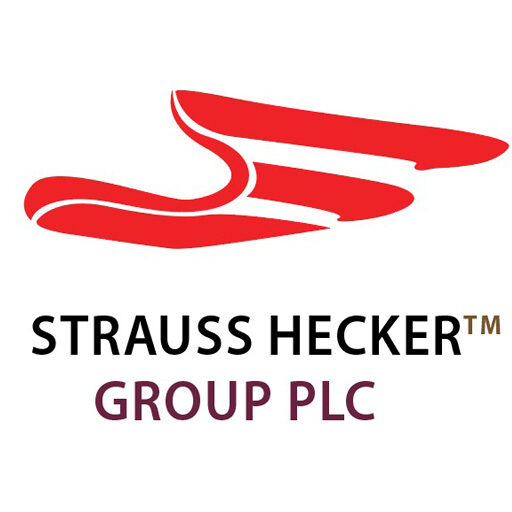Fire risk prevention
The risk of fire is a fairly frequent event that affects and has affected refineries in almost all countries of the world. The risk is inherent in the production process and is determined by explosions and fireballs that normally destroy the entire refinery or a large part of it. With our refineries, this does not happen thanks to the modularity of the plant. Each module has a production of 1,000 barrels/day and is spaced away from any other module. In the unfortunate event of a fire, this is contained to the module and does not propagate to all the others.
Oil & Gas
Strauss Hecker Group PLC is an English company that together with its Group has been designing building, assembling and starting "turnkey'' modular refineries for over 20 years
It also ensures and guarantees the training necessary for the management of the plant to its customers.
Strauss Hecker Group PLC has built over 40 refineries operating in Eastern Europe on the basis of an innovative proprietary technology, covered by parents.
Our Pillars are ;
Refining of crude oil, using the "Vacuum" technology, which allows obtaining the fractionation of the various derivatives of crude oil with maximum temperatures of 100/120 °C using as fuel the gas produced by the same crude oil that must be refined.
Traditional "Fractionation Tower" or "Craking" refining systems require temperatures ranging from 250/300/400/600 °C and use liquid fuels. Then they consume part of the fuels that are produced to power the process, reducing the percentage of outgoing carburant.
The plants, patented by us, are modular, with a distillation capacity ranging from 1/3/5/10,000 barrels/day up to 150,000 barrels/day (and more), to obtain the production of:
- Plant for the production of Bitume, patented by us, suitable for the construction of road asphalt and waterproofing.3. Desulphurization plant to eliminate sulphur according to Community legislation, to obtain high-octane gasoline; JP Jet-Fuel, Jet-Propellant; Fuels for ships desulphurizing the Mazut.
- Elastic tanks made with High Resistance Polymers, equipped with pumps for filling and rapid emptying, suitable for the containment of carburant, drinking water, liquid food etc.
They can be placed above ground, under the ground (buried); under sea water; in the depths of ports to provide water or fuel to ships without occupying large outdoor spaces; secret and strategic reserves in the territory to supply the armed forces with fuels, water and lubricating oils; also placed under the bed of rivers and streams. They resist temperatures ranging from - 60 °C to + 90 °C. They are protected externally by reflective material - reflectors to repel the sun's rays. They are guaranteed for 25 years.
The capacity is 250,000 litres for each tank (250 cubic meters). They can be placed in large numbers to hold up to many million litres. They are equipped with pump groups for quick filling or emptying.
Other products;
The refinery is also able to produce the following products:
1 - Fuel additives, including anti-knock agents;
2 - Lubricating oils for engines;
3 - Solvents for industries (paints, perfumes, etc.);
4 - Calcium sulphate.
6. Ecological process.
Our refineries have a totally ecological process because they do not emit any emissions into the environment.
The gas is normally released into the environment or burned in a torch, the so-called "gas flaring" typical of traditional technology, if improperly managed can emit methane, sulfur dioxide, other sulfur compounds and other volatile organic compounds even aromatic hydrocarbons (benzene, toluene, xylenes) and benzopyrene, known to be carcinogenic.
In our process, however, gas is used in boilers to power the refining process. No sulphur dioxide or hydrogen sulfide, which is aggressive to the environment and dangerous to human health, is therefore emitted.
REFINERY
Oil treatment plant
Oil treatment plant OTP
capacity - 10-30 m3 / hour.
Oil treatment plant OTP is designed for complex oil treatment for the purpose
of desalting, dehydration, removal of mechanical impurities, and viscosity
reduction.
The main OTP processes are:
➢ liberation of the incoming watered oil from coarse emulsion water.
➢ weakening the stability of the emulsion by the reagent.
➢ maximum increase in the rate of oil treatment.
The parameters of the treated oil:
- mass fraction of water,%, no more than 0.5;
- concentration of chloride salts, mg / dm3, no more than 100;
- mass fraction of mechanical impurities,%, no more than 0.05
Storage, and transportation of fuel in hot climates and sandy, rocky
terrain.
Problems
* Extreme temperature operation, ultra-high and low temperatures.
* Intense solar radiation. Maximum additional protection is required for equipment and materials.
* Excessive irrigation leads to the accumulation of salt in the soil.
* Complex logistics: deserted, waterless, and off-road areas
* Increased construction costs during the construction of stationary objects due to bulk sand or rocky soil.
* Increased wear and tear of equipment and materials.
* Due to sand drills, additional protection of machines, equipment and mechanisms is required, as well as
insulation coating
* Increased requirements for construction speed and Organization
DESULPHURIZATION PLANT FOR PETROLEUM PRODUCTS
The problem of reducing the sulphur content (desulphurization) in petroleum
products attracts a great deal of attention from domestic and foreign researchers.
According to numerous foreign and Russian researchers, one of the most promising
methods for desulphurization of petroleum products is the oxidation of products
with a mixture of ozone and air.
"The use of the proposed desulphurization technology is promising, in the first
place, for mini-oil refineries that, with poor financial capacity, are unable to install
expensive and energy-intensive oil refinery group. However, the possibility of scaling
back the proposed technology will allow it to be used in large oil refineries, thereby
improving the quality of oil and reducing the financial burden on the enterprise.
EXISTING TECHNOLOGIES.
The three main methods of removing sulfur are:
1. Hydrotherapy. The method is based on the treatment of lubricating oils and
liquid paraffins with hydrogen (or gas containing hydrogen), at a temperature of
200-3250 ° C, at a pressure of 4-5 MPa, in the presence of a catalyst. The gas/supply
ratio is 300:1. Gas consumption - 0.2-03% of the total mass. As a result, H2S, NH3,
H2O and N2 are released.
2. Hydrocracking. When using this method, the raw material is also treated with
hydrogen (or gas containing hydrogen), but at a high temperature and pressure of
300-450°C and 5-30 MPa respectively, in the presence of a catalyst. Fractions of
high-boiling oil is processed, mainly vacuum distilled with a boiling point of 300-
540 ° C.
3. Hydrodesulphurization. They are used to remove sulfur from the high-boiling
fractions (boiling point 540-580°C) of tar, fuel oil, and deasphalted oil. The process is
carried out at 360 - 430°C and at a pressure of 10-20 MPa, the gas-feedstock ratio
(600-1000):1.
The technological schemes of the processes are very similar: the heating of the
components, mixing, and processing in the reactor, cooling of the hydrogenated
product, separation of gases containing hydrogen and hydrocarbons from it
respectively in high and low-pressure separators, with subsequent distillation into
target products, gas purification from H2S, NH3, and H2O.
Attention is drawn to the large excess of gas and its very low use in hydrogenation
reactions, typical of heterogeneous processes.
The activation of processes in all cases is signaled by heating and is enhanced by
catalytic reactions. Note that the presence of sulfur, metals and aromatic hydrocarbons
leads to the rapid passivation of catalysts.
In these processes, hydrogenolysis reactions occur, that is, the bonds of carbon with
sulfur, metals, oxygen, and nitrogen are broken. Under conditions of excess
hydrogen, H2S, NH3, and H2O are formed, etc.
Purification of petroleum products from sulfur is also carried out by treatment with
acids, alkalis and other reagents.
Processes have many disadvantages
The disadvantages of these methods include high energy consumption, complexity
of instrumentation, irrecoverable losses of expensive catalysts, system complexity
and selectivity of methods in relation to the sulfur compounds removed, increased
explosiveness, environmental toxicity, environmental risk, etc.
In the modern oil refining industry, under conditions of strict requirements for the
quality of petroleum products and the depletion of liquid hydrocarbon reserves of
"light" quality, promising and energy-efficient new systems are required, which
make it possible to provide: the processing of petroleum products without the use of
expensive catalysts, increased processing depth of liquid petroleum products,
reduction of the content of harmful impurities, improvement of the quality of the
output product.
Therefore, a method for the oxidation of sulfur-containing compounds in the
reaction zone with a mixture of ozone and oxygen of air is proposed.
The method is based on an important property of sulfur-containing saturated
organic compounds: they oxidize much faster than hydrocarbons, which is explained
by their lower thermodynamic strength. For example, for thiophene, ^H°t is 19.6
kcal/mol, while for SO2 it is 70.96 kcal/mol.
Facility Photos
